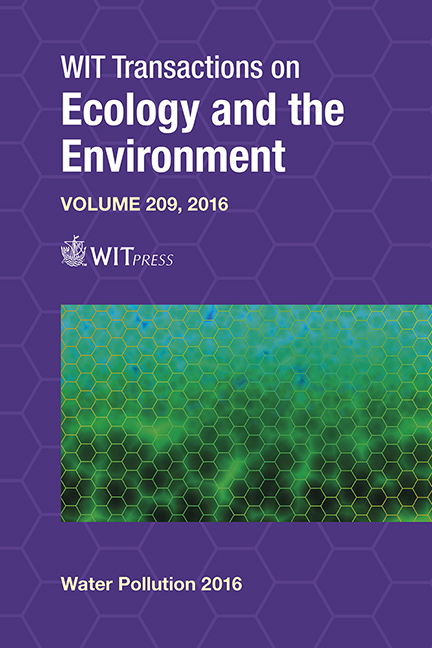Application Of The UV/H2O2 Advanced Oxidation Process For Municipal Reuse Water: Bench- And Pilot-scale Studies
Price
Free (open access)
Transaction
Volume
209
Pages
12
Page Range
233 - 244
Published
2016
Size
517 kb
Paper DOI
10.2495/WP160211
Copyright
WIT Press
Author(s)
Z. Shu, A. Singh, N. Klamerth, K. McPhedran, P. Chelme-Ayala, J. R. Bolton, M. Belosevic, M. Gamal El Din
Abstract
The occurrence of a variety of contaminants of emerging concerns (CECs) such as hormones and pharmaceuticals in municipal wastewater is an ongoing concern. In this study, UV/hydrogen peroxide (H2O2) was applied to treat the secondary effluent from Gold Bar Wastewater Water Treatment Plant in Edmonton, Alberta, Canada. Bench-scale tests were conducted to investigate the direct UV photolysis and UV/H2O2 oxidation of nine selected model micropollutants. The quantum yields at pH 7 were found to be between 0.0010 and 0.13. To investigate the effect of the water matrices, the degradation rate constants for 2,4-D and carbamazepine were determined in MilliQ water and wastewater. Overall, the estimated rates were higher in MilliQ water than those estimated in actual wastewater samples with differences of 34 and 37% for 2,4-D and carbamazepine, respectively. Differences in the pseudo first-order rate constants could be attributed to the matrix effects of the wastewater. The pilot-scale UV/H2O2 process did not appear to be able to remediate acute estrogenic activities in the reuse water to goldfish, whereas it had the potential to minimize the estrogenic effects of the reuse water in chronic exposures.
Keywords
micropollutants, endocrine disruption, estrogenic effects, reuse water, UV/H2O2 process, fluence-based degradation rate constant





